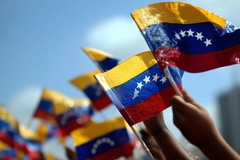
- Industry news
Industry news
- Category news
Category news
- Reports
- Key trends
- Multimedia
- Journal
- Events
- Suppliers
- Home
- Industry news
Industry news
- Category news
Category news
- Reports
- Key trends
- Multimedia
- Events
- Suppliers
EU Bans Import of Baby Food with Chinese Milk

The EU ban adds to the growing list of countries that have banned or recalled Chinese dairy products. Thus far the contamination which has killed four Chinese babies and sickened 54,000.
26/09/08 The European Union has banned imports of baby food containing Chinese milk on the back of the melamine crisis. The chemical that was illegally added to China's dairy supplies has turned up in candy and other Chinese-made goods that were quickly pulled from stores worldwide. The crisis originally arised with an infant milk produced by Sanlu (pictured), but the issue has spread. Melamine has been found in infant formula and other milk products from 22 Chinese dairy companies. Suppliers trying to cut costs are believed to have added it to watered-down milk because its high nitrogen content masks the resulting protein deficiency.

The EU ban adds to the growing list of countries that have banned or recalled Chinese dairy products because of the contamination which has killed four Chinese babies and sickened 54,000. In addition to the ban, the European Commission called for more checks on other Chinese food imports.
The EU ban followed the European Commission’s request to the European Food Safety Authority (EFSA) to provide urgent scientific advice on health risks for European consumers related to the possible presence of melamine in composite foods containing milk or milk products originating from China.
The import of milk and milk products originating from China is prohibited into the EU, however composite food products such as biscuits and chocolate, which could be made from contaminated milk powder, may have reached the EU. Therefore, the European Commission requested EFSA to provide scientific advice on the risk for human health related to presence of melamine in such composite foods.
The primary target organ for melamine toxicity is the kidney. There is uncertainty with respect to the time scale for the development of kidney damage. Thus, EFSA applied a tolerable daily intake (TDI) of 0.5 mg/kg body weight (b.w.) in considering possible health effects which might occur with repeated consumption of melamine contaminated products over a relatively short period.
EFSA was asked to consider health effects due to melamine exposure via the consumption of contaminated biscuits and confectionary. Based on available data, EFSA developed a number of theoretical exposure scenarios for biscuits and chocolate containing milk powder both for adults and children. In the absence of actual data for milk powder, EFSA used the highest value of melamine (approximately 2,500 mg/kg) reported in Chinese infant formula as a basis for worst case scenarios.
EFSA’s scientists said in a statement that if adults in Europe were to consume chocolates and biscuits containing contaminated milk powder, they would not exceed the TDI (Tolerable Daily Intake) of 0.5 mg/kg body weight, even in worst case scenarios. Children with a mean consumption of biscuits, milk toffee and chocolate made with such milk powder would also not exceed the TDI. However, in worst case scenarios with the highest level of contamination, children with high daily consumption of milk toffee, chocolate or biscuits containing high levels of milk powder would exceed the TDI. Children who consume both such biscuits and chocolate could potentially exceed the TDI by up to more than three times.
High levels of melamine can primarily affect the kidneys. EFSA applied the TDI of 0.5 mg/kg body weight for melamine in a specific case of contamination in 2007.
The Commission requested EFSA to focus its assessment on biscuits and chocolate which contain milk powder as such products can be imported from China. EFSA developed theoretical exposure scenarios based on European consumption figures of biscuits and chocolate. In the absence of available data for contaminated milk powder, EFSA also used the highest value of melamine, reported in Chinese infant formula as a basis for worst case scenarios. EFSA stressed that it is not known at the moment whether such theoretical high level exposure scenarios could occur in Europe.










